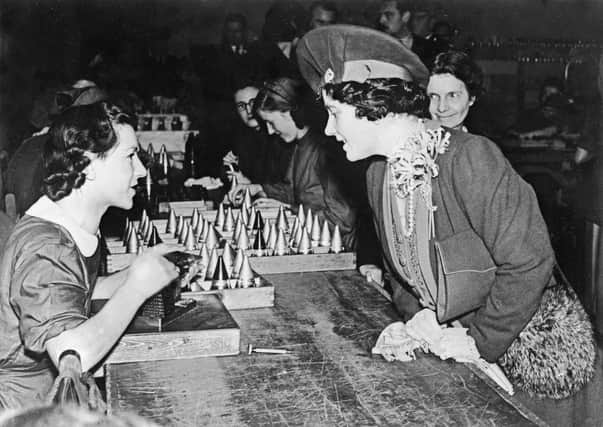Rare pictures of the Royals at war


But in one respect, nothing had changed. While other monarchs across Europe had abdicated or been removed, the King’s father, George V, had emerged from the First World War with renewed popularity, a symbolic new family name and a secured place on the throne.
The next generation followed the example he had set, and as these pictures from the archive show, the new Royals spent the Second World War among their people, as figureheads and fellow travellers in a conflict that paid no heed to class.
Advertisement
Hide AdAdvertisement
Hide AdGeorge VI held the ranks of Admiral of the Fleet, Field Marshal and Marshal of the RAF, and with Queen Elizabeth inspected troops and visited factories. He was never seen out of uniform.


During the Blitz, the King and Queen visited bombed areas to see the damage inflicted from the air. Princess Elizabeth, meanwhile, joined the Auxiliary Territorial Service at 19, and trained as a driver and mechanic. Princess Margaret, her younger sister, joined the Sea Rangers.
Editor’s note: first and foremost - and rarely have I written down these words with more sincerity - I hope this finds you well.
Almost certainly you are here because you value the quality and the integrity of the journalism produced by The Yorkshire Post’s journalists - almost all of which live alongside you in Yorkshire, spending the wages they earn with Yorkshire businesses - who last year took this title to the industry watchdog’s Most Trusted Newspaper in Britain accolade.
Advertisement
Hide AdAdvertisement
Hide AdAnd that is why I must make an urgent request of you: as advertising revenue declines, your support becomes evermore crucial to the maintenance of the journalistic standards expected of The Yorkshire Post. If you can, safely, please buy a paper or take up a subscription. We want to continue to make you proud of Yorkshire’s National Newspaper but we are going to need your help.


Postal subscription copies can be ordered by calling 0330 4030066 or by emailing [email protected]. Vouchers, to be exchanged at retail sales outlets - our newsagents need you, too - can be subscribed to by contacting subscriptions on 0330 1235950 or by visiting www.localsubsplus.co.uk where you should select The Yorkshire Post from the list of titles available.
If you want to help right now, download our tablet app from the App / Play Stores. Every contribution you make helps to provide this county with the best regional journalism in the country.
Sincerely. Thank you.
James Mitchinson, Editor
Comment Guidelines
National World encourages reader discussion on our stories. User feedback, insights and back-and-forth exchanges add a rich layer of context to reporting. Please review our Community Guidelines before commenting.